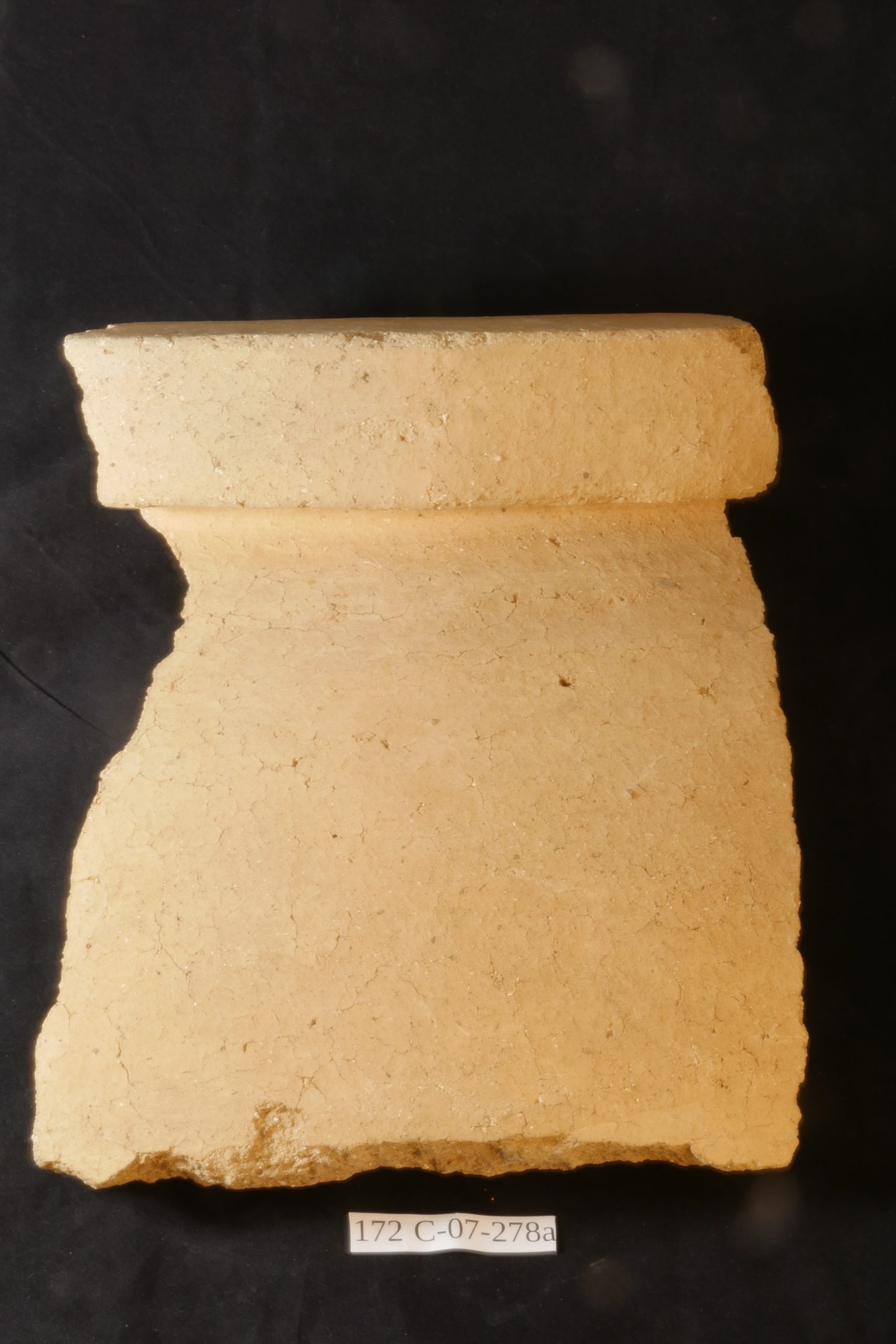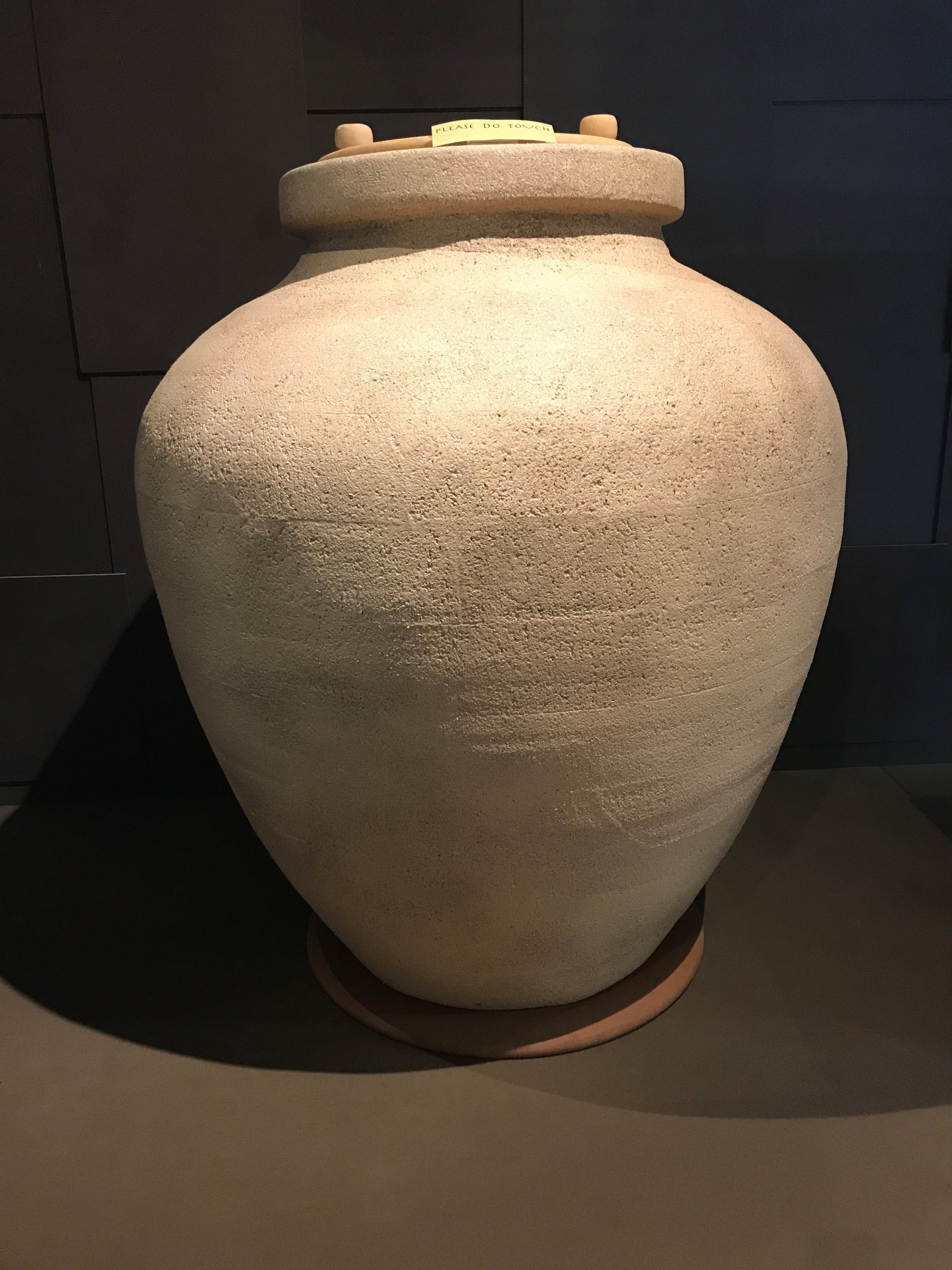
Etruscan Cetamura
Dolium A rim and wall
Period | Etruscan |
Year | 3rd c. BCE |
Material | Ceramic |
Location | Outside Building L |
Cet. Inventory | C-07-278a |
More than 100 sherds survived from a huge jar (dolium) found in a storage area outside the walls of the Etruscan sanctuary of Building L at Cetamura. These were used to reconstruct a 3-D model in Styrofoam. The contents of the vessel are unknown, but were more likely liquid than a solid substance.
Prov. 58N/12W.10. Outer diam. of rim ca. 96. W. of rim 13.5. Th. of rim 7. Th. of wall ca. 5. Wt. 11.66 kg Munsell 5 YR 6/4 “light reddish brown”
Rim and part of the wall of a large storage jar (dolium), of which more than 100 fragments were excavated in a unit in which the base was found in situ (diam. 65 cm; estimated original height of dolium ca. 170 cm). Standard dolium fabric, with rough temper, many inclusions of calcareous material, mica, and black sandstone. Smoothed with a paste on exterior and on rim.
The base had within it a deposit of rather dense carbon, tentatively identified as the remains of sessile oak, perhaps from a wooden lid for the dolium. No evidence was found for the original contents of the jar, which may have been a liquid rather than a plant substance with seeds. Adjacent to the vessel was Dolium B, of which the base was in situ (interior diam. of base 64 cm). These two large jars may be interpreted as standing in a storage area outside the Etruscan sanctuary, Building L. The impression in the earth of a third dolium (C) was found nearby. The artifacts associated with the area suggest that the dolia date to the 3rd cent. BCE by context.
Katherine Kaplan created a reconstruction of the profile of Dolium A, which was used by Windham Graves of the Facility for Arts Research at Florida State University to create a 3-D Styrofoam replica of the vessel by means of a digital router.
Dating: 3rd c. BCE





